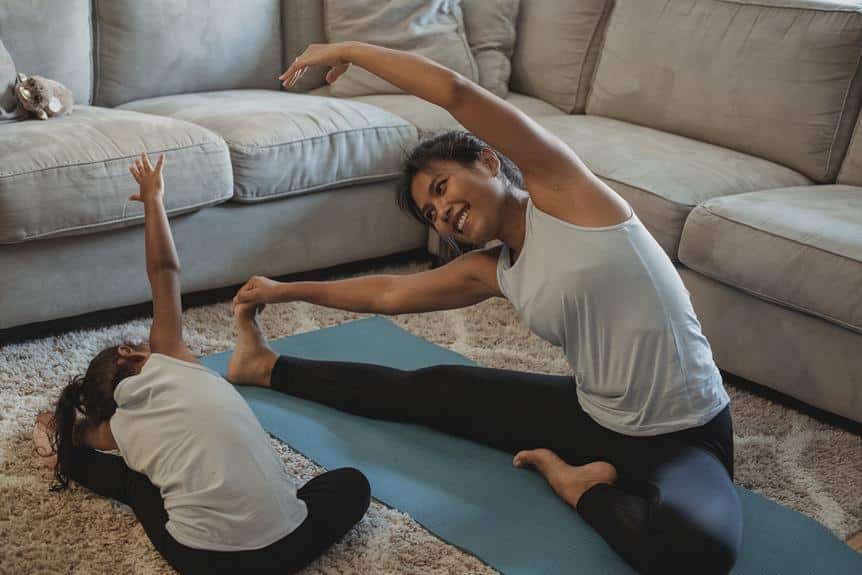Are you struggling to attract readers to your yoga blog? Want to know the secret to effective SEO content? Well, look no further!
In this article, we’ll dive into the world of yoga blogging and show you how to make your content shine. From keyword research to optimizing for mobile, we’ve got you covered.
So grab your mat and get ready to elevate your yoga blog to new heights with these proven SEO techniques.
Key Takeaways
- Comprehensive keyword research helps identify keywords and phrases used by potential readers, providing insights into their interests and needs.
- Compelling titles and meta descriptions that incorporate keywords, power words, numbers, and questions attract both readers and search engines, increasing click-through rates.
- Internal and external linking improve user experience, guide readers to related content, establish credibility and authority, and enhance SEO efforts.
- Mobile optimization, including responsive design, shorter paragraphs, larger fonts, and faster loading times, helps reach the growing market of mobile users and improve their user experience.
Keyword Research: Understanding the Yoga Niche
To effectively optimize your yoga blog for search engines, you need to understand the yoga niche through comprehensive keyword research.
This means identifying the specific keywords and phrases that potential readers are using to search for yoga-related content.
By conducting thorough keyword research, you can gain valuable insights into the interests, needs, and preferences of your target audience.
For example, you might discover that people are searching for terms like ‘beginner yoga poses,’ ‘yoga for flexibility,’ or ‘yoga retreats in Bali.’
Armed with this knowledge, you can create high-quality content that addresses these topics and meets the needs of your audience.
Additionally, incorporating these keywords strategically throughout your blog posts can improve your chances of ranking higher in search engine results, increasing your visibility and attracting more organic traffic to your yoga blog.
Compelling Titles and Meta Descriptions: Attracting Readers and Search Engines
When optimizing your yoga blog for search engines, one crucial aspect to consider is creating compelling titles and meta descriptions that attract both readers and search engines. These elements serve as the first impression for your content in search engine results pages (SERPs) and play a vital role in determining whether users will click on your link.
To make your titles compelling, use keywords that accurately represent the content and appeal to your target audience. Incorporate power words, numbers, and questions to pique curiosity and generate interest.
Additionally, meta descriptions provide a brief summary of your content, so make sure they’re concise, informative, and enticing.
Internal and External Linking: Building Authority and Relevance
Create internal and external links to build authority and relevance for your yoga blog. Linking is a crucial aspect of SEO content, as it helps search engines understand the context and importance of your blog.
By strategically incorporating internal links within your blog posts, you can guide readers to related content on your website, keeping them engaged and encouraging them to spend more time on your site. Internal links improve user experience by making it easier for readers to navigate through your blog, enhancing their overall experience.
External links, on the other hand, help establish your blog’s credibility and authority by connecting to reputable sources. Linking to reputable sources shows that you have done your research and adds credibility to your content. Search engines like Google consider relevant and high-quality links when ranking websites, so linking to authoritative sites can improve your SEO efforts.
Here are three reasons why linking is essential for your yoga blog:
- Boosts credibility: Linking to reputable sources shows that you have done your research and adds credibility to your content.
- Improves user experience: Internal links make it easier for readers to navigate through your blog, enhancing their overall experience.
- Enhances SEO: Search engines like Google consider relevant and high-quality links when ranking websites, so linking to authoritative sites can improve your SEO efforts.
Optimizing for Mobile Devices: Reaching Yogis On-The-Go
To reach yogis on-the-go, optimize your yoga blog for mobile devices.
In today’s fast-paced world, people are constantly on their smartphones and tablets, searching for information on the go. By ensuring that your website is mobile-friendly, you can tap into this growing market of mobile users and connect with yogis wherever they may be.
Mobile optimization involves making your website responsive, ensuring that it adapts to different screen sizes and resolutions. It also means optimizing your content for mobile consumption, such as using shorter paragraphs and larger fonts for easier reading on smaller screens. Additionally, consider implementing faster loading times and easy navigation to enhance the user experience.
Measuring and Analyzing SEO Content Success: Tracking Your Progress
Track your SEO content success by monitoring key metrics and analyzing data. This is crucial to understand how well your content is performing and whether it’s reaching your intended audience. By measuring and analyzing your content’s success, you can make informed decisions on how to optimize and improve your SEO strategy.
Here are three emotional responses you may experience when tracking your progress:
- Excitement: When you see a significant increase in website traffic and engagement, it’s natural to feel excited about the success of your SEO content. This shows that your efforts are paying off and that you’re connecting with your target audience.
- Frustration: If your metrics show a decline in rankings or a lack of engagement, you might feel frustrated. However, this is an opportunity to identify areas for improvement and make necessary changes to your content strategy.
- Motivation: Tracking your progress can provide motivation to continue creating high-quality SEO content. Seeing positive results can inspire you to push further and strive for even better performance.
Conclusion
Congratulations! You’ve now mastered the art of creating effective SEO content for your yoga blog.
By conducting keyword research, crafting compelling titles and meta descriptions, incorporating internal and external linking, optimizing for mobile devices, and measuring success, you’re on your way to reaching and engaging yogis everywhere.
So, get ready to watch your blog soar to new heights as you attract more readers and build authority in the yoga community.
Namaste!

Tony is an accomplished SEO professional with a proven track record spanning over 7 years in the industry. A staunch advocate for a scientific approach to SEO, Tony is committed to continuous learning and development through rigorous SEO testing. His hands-on experience involves countless hours spent on proving or disproving SEO theories, making him a reliable authority on search engine optimization. Tony currently leverages his extensive expertise by running Synergy SEO, an SEO agency dedicated to help businesses reach new heights.
